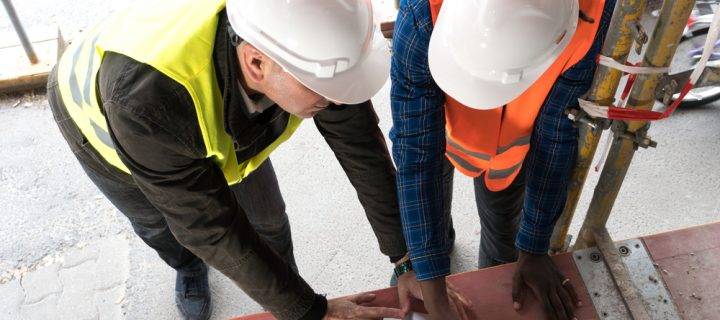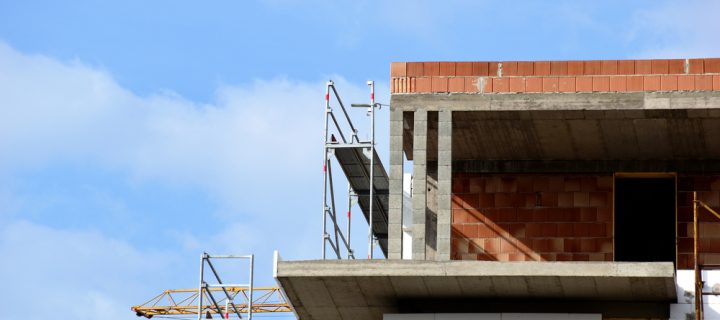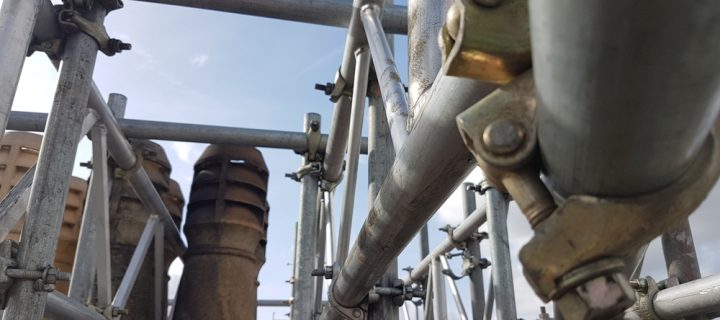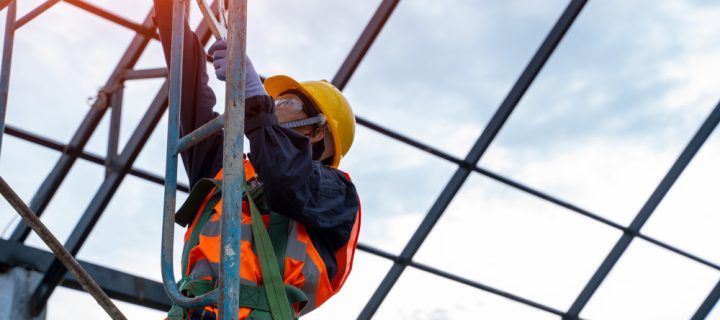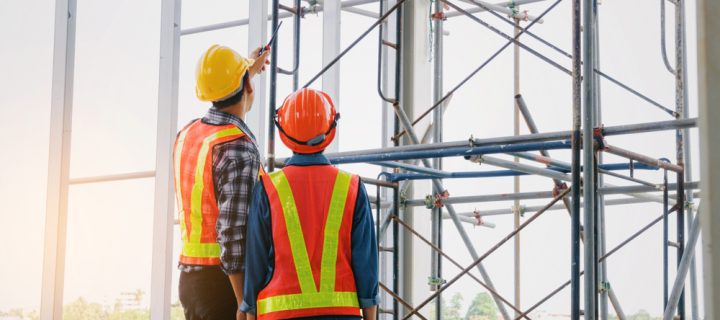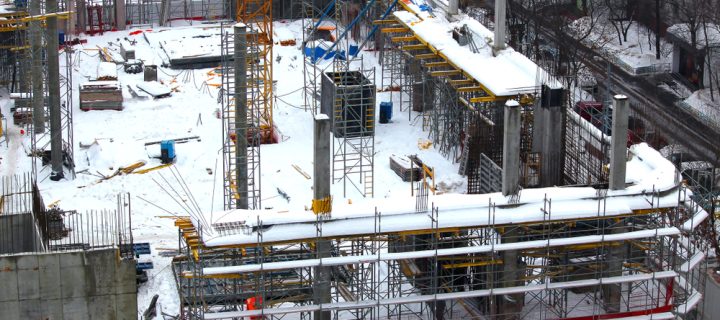In the construction and scaffolding industry, it is not uncommon to see workers carrying out duties at height. According to the Health & Safety Executive (HSE), the construction industry has the highest number of work-related fatal accidents every year and around 30% of them were caused by falls from height in 2022/23. While there is a high accident risk when working at heights, employers are responsible for equipping workers with proper training to help prevent these accidents. In this article, we will discuss the importance of proper training for scaffolding workers. 1) Compliance With Regulations One of the main reasons why proper training is essential is to comply with relevant regulations. The Work at Height Regulations 2005 states employers who appoint work at heights must carry out a risk assessment and ensure work is properly planned, supervised and carried out in a safe manner by competent workers. Failure to comply with these regulations will put workers at risk and result in penalty fines. 2) Better Understanding of Health & Safety Proper training gives scaffolding workers a better understanding of health and safety on-site. Workers will be able to identify potential hazards, implement safety protocols and report any faults or incidents. Furthermore, regular training will be required for young or newly-recruited workers to maintain health and safety to the highest of standards. Overtime, this will create a safer working environment and reduce the risk of work-related accidents. 3) Improved Craftsmanship & Productivity Well-trained scaffolding workers bring better craftsmanship to their duties. They will master the skills of erecting and dismantling scaffolding structures smoothly with little disruption to the organisation. They will also be equipped with the skills and knowledge to adapt to unexpected challenges and solve them to the best of their ability. As a result, productivity will be improved as scaffolding projects will be completed promptly and to client requirements. Accredited Scaffolding Provider in Derbyshire To summarise, not only is training required to comply with regulations, but it is essential for preventing work-related accidents and improving work quality. At Network Scaffold Services, we hold a strict health & safety policy and ensure all of our workers receive high-quality training as well as being updated on the latest industry standards....
Read Moreabout The Importance of Proper Training for Scaffolding WorkersIf you are planning on construction work for your building, scaffolding may be required. It provides a stable and safe platform for workers to carry out their duties at height. Whether this is your first time looking into a scaffolding system or your hundredth time, it’s crucial to choose the right scaffolding system for your project. Using the wrong scaffolding system could jeopardise the project and risk the safety of workers. In this article, we will discuss the types of scaffolding systems and the factors you should consider before making a final decision. Types of Scaffolding Systems While modern scaffolding systems are made from steel, not all of them are used for the same purpose. There are many different types of scaffolding systems, each designed for various projects and needs. Some of the common types include: 1) Single & Double Frame Also known as brick layer scaffolding, single frame scaffolding consists of ledgers, putlogs and standards (vertical poles) which are placed parallel to the wall, approximately 1.2 metres apart. This one frame system supports one side of the scaffolding, whilst the other side is supported by the structure itself. Double frame scaffolding is much stronger than single frame scaffolding because it consists of two rows of standards, instead of one, and the frame is independent from the structure. Both scaffolding systems are mostly used in brick and stone masonry projects. 2) Cantilever Also known as needle scaffolding, cantilever scaffolding involves the addition of a series of fully braced needles which extend outward from the building, providing a stable foundation for the scaffolding. Cantilever scaffolding is used in construction projects where work needs to be carried out on a side of a building, but the ground surface isn’t suitable for a traditional scaffolding system. 3) Suspended Suspended scaffolds have a platform suspended or hung by a cable system from an overhead structure such as a roof, which can be electronically raised or lowered by a motor to the required level. It is commonly used for minor repairs and maintenance work such as window cleaning and painting. Scaffolding in Derbyshire & Surrounding Locations Now that you are aware of the different types of scaffolding systems, the next thing is to consider...
Read Moreabout How to Choose the Right Scaffolding System for Your ProjectIn the vibrant city of Nottingham, construction has provided housing and economic growth, as such, the importance and impact scaffolding has had on the city is not to be overlooked. In this article, we will highlight how quality scaffolding has contributed to successful construction projects across Nottingham, and what it can do for your future construction project. Creates A Safe Working Environment The main priority of any construction project is the safety of the workforce. Quality scaffolding plays a vital role in ensuring a safe working environment is exhibited. It provides a stable and elevated platform for workers to complete their duties, reducing the risk of work-related accidents and injuries. In Nottingham, where construction projects often involve complex designs and structures, quality scaffolding is absolutely essential for the safety of workers at heights. Complies With Local Regulations Nottingham, like any other UK city, has strict safety regulations and building codes. Quality scaffolding not only ensures a safe working environment for workers, but it also aids construction projects in compliance with local regulations. Scaffolding that meets or exceeds safety standards is a legal requirement, and failure to adhere to these standards can lead to project delays, fines, or even termination. Preserves Historic Buildings Nottingham has a rich architectural heritage, with historic buildings that require careful observation during renovations. Some of the most historic buildings in Nottingham include Wollaton Hall, Nottingham Castle, Albert Hall and The Express Offices. All historic buildings would require quality scaffolding during renovations to support and preserve it without causing damage to the original architecture or surrounding environment. For Quality Scaffolding in Nottingham, Contact Network Scaffold Services At Network Scaffold Services, we are passionate about providing high-quality scaffolding to construction projects across the Midlands. In fact, we are one of the best scaffold companies in the area. Based in Derby, we also offer our services in Nottingham and the surrounding areas. When you choose us as your scaffolding supplier, we work closely with you, prioritise health and safety, train our staff to the highest of standards, comply with the latest regulations and follow good working practices such as regular inspections. Not only that, but we also hold a strict environmental policy to ensure our operations have as...
Read Moreabout The Importance of Quality Scaffolding in Nottingham Construction ProjectsWhen it comes to working at heights, choosing the right approach is essential for safety and efficiency of any project. Workers typically use two different approaches when operating at heights – scaffolding and ladders. Both serve their purposes, however, understanding each of them can help in making an informed decision. In this article, we will look at the key differences between scaffolding and ladders and why scaffolding is generally considered the better choice. Stability There is no doubt about it, scaffolding offers superior stability. Scaffolding structures are securely erected to the ground, proving a table and level platform for construction workers. This stability reduces the risk of accidents at height, ensuring a safer working environment. On the other hand, ladders can be less stable if not positioned properly, especially when placed on uneven or soft ground, increasing the likelihood of falls and injuries. Height & Accessibility Scaffolding provides greater height and accessibility than ladders. With multiple levels and platforms, construction workers can access several areas with ease. This accessibility is especially beneficial for large-scale projects where more construction workers are present and different parts of the building need attention. In contrast, ladders are limited in height and need to be moved and repositioned, which can be challenging in enclosed spaces. Efficiency The efficiency of a project can often depend on the approaches taken. Scaffolding provides a larger working area, allowing multiple workers to operate on the platform at the same time. This approach increases productivity, as work is completed more efficiently. While ladders are suitable for quick access at lower heights, they are less efficient during continuous work periods or when multiple workers need access to different heights. Why Is Scaffolding Better Than Ladders? Given the above key differences, scaffolding is often considered the better choice for many projects. Ladders are ideal for small domestic tasks such as cleaning gutters and fixing a roof, but scaffolding has far more advantages for commercial projects. When deciding between scaffolding and ladders, make sure to prioritise the safety of your workers and the efficiency of your project above all else to ensure a smooth-running workflow. Get A Quote, Contact Network Scaffold Services Today If you work at heights and are looking for...
Read Moreabout Scaffolding vs Ladders: Which is the Right Choice for Your Project?Scaffolding provides a safe and stable platform for construction, maintenance and repair work. However, what many individuals might not realise is that scaffold towers and systems have specific weight limits which must be complied with. As a scaffolding company, we believe it’s critical to understand these scaffold weight limits when working on any construction project, whether you work as a scaffolder or a construction project manager. In this article, we will explain the maximum scaffold weight limits, the influencing factors and the risks of exceeding them. Understanding Scaffold Weight Limits Scaffold weight limits refer to the maximum amount of weight a scaffold system can safely support without compromising its stability. These limits are vital to ensuring the safety of workers as well as the successful completion of the construction project. According to the Health and Safety Executive, weight limits for general access scaffolding can be divided into four main categories: Very light-duty scaffolding can support loads up to 0.75 kN/m² Light-duty scaffolding can support loads up to 1.50 kN/m² Medium-duty scaffolding can support loads up to 2.00 kN/m² Heavy-duty scaffolding can support loads up to 3.00 kN/m² Factors While the above weight limits are only a guideline for access scaffolding, there are a number of factors which can influence scaffold weight limits. These include: Scaffold Type – Different scaffold systems are capable of supporting different load capacity. For instance, shoring scaffolding is designed to support heavier loads than access scaffolding. Materials and Equipment – The weight of materials and equipment placed on the scaffold must be within recommended limits. Number of Workers – The number of workers on the scaffold system can affect the overall weight limit. Local Regulations – Adhering to local regulations and building codes is non-negotiable. They often take into account factors such as climate, seismic activity and other site-specific conditions. These regulations may differ for scaffolding in your area. Scaffold Condition – Regular inspections are vital to ensure the scaffold system remains in good condition. Damaged or weakened parts can significantly reduce the scaffold’s weight-bearing capacity. To determine the maximum weight limit for your scaffold system, you will need to consider these factors and calculate the added maximum weight on your scaffold system at any...
Read Moreabout What Are Scaffold Weight Limits?It is no surprise to Brits, but winter in the UK is quite unpredictable. Scaffolding in winter has its own challenges for construction and other scaffolding-related projects. With the prospect of heavy rain, strong winds, frost and the occasional snowfall, it can be a particularly problematic time for scaffold structures. Additionally, safety becomes a prime concern for workers and personnel. Ensuring the safety of your scaffolding is crucial to prevent accidents, delays and costly damages. In this article, we will share the essential tips for scaffolding in the winter to tackle the cold weather and to ensure smooth-running construction projects. Regular Inspections Are Key Before the winter season sets in, conduct a thorough inspection of your scaffolding structures. Check for any signs of wear and tear, loose fittings or damaged components. Pay extra attention to the base plates and make sure they are secure. Regular inspections will help you identify and address potential issues before they escalate. Anti-Slip Measures Winter brings slippery conditions, and working on scaffolding can become dangerous for workers and other personnel. To combat this, consider installing anti-slip materials on the scaffold boards and staircases. Anti-slip mats, grip-enhancing coatings and cleated scaffold boards can provide additional grip, reducing the risk of falls and accidents due to slippery surfaces. Monitor The Weather While we can’t predict the weather, we can stay updated on the latest weather forecast. In the UK, the weather can change rapidly at any time. High winds, freezing rain and snow can compromise the stability of your scaffolding structure. It’s crucial to monitor weather conditions on a daily basis and take appropriate precautions, such as lowering scaffolding heights or suspending work during extreme weather conditions. De-Icing and Snow Removal When snow and ice has covered your scaffolding structure, it can add significant weight and weaken the structure. Remove snow and ice regularly using appropriate tools, such as snow shovels or pre-treat the area with a suitable de-icing agent. Ensure walkways and access points are clear from ice or snow to prevent slips and falls. Gritting walkways with rock salt can help prevent black ice and add underfoot grip. Otherwise, if walkways or access points are unsafe, it might be worth creating a detour if...
Read Moreabout Scaffolding In Winter: Essential Tips To Tackle The Cold Weather
